No Haleakala Sunrise
Bike Tour?
Maui Sunriders offered Haleakala sunrise tours for nearly 20 years. Here is why we decided to bid farewell to sunrise tours:
HALEAKALA SUNRISE Bike Tours are MORE EXPENSIVE
The National Park service charges a pretty penny for tour operators to shuttle guests to the summit for sunrise. Haleakala sunrise bike tour companies pass that entire cost off to you, the guest. Therefore, booking a sunrise bike tour with any operator will cost $200-$240 per person.
Our tour is around half of that price, and, due to the self-guided nature of our tour, we feel that the cycling experience is, in fact, better.
Did you know you can see the sunrise (with a National Park reservation) or sunset (no reservations needed) on your own for a fraction of the cost? Read to the end for tips on how to pull this off!
ALL HALEAKALA Bike Rides START AT THE SAME PLACE
The National Park Service does not allow any downhill bike tour operator to ride bikes within the National Park, which starts at an elevation of about 7,000′ (the summit is at 10,000′!). No bike tours on Maui start at the summit!
Immediately after watching the sunrise from the summit on a sunrise bike tour, you get back in the van to drive down to an elevation of 6,500′; all bike tour operators use this elevation as the staging area for their bike rides.
On a sunrise bike tour, your experience at the summit is short-lived (and cold!). Don’t you want to explore the summit area? Maybe explore some of the 35+ miles of hiking trails accessible from the summit? We suggest going into the Park on your own to really enjoy your time up there!
Sunrise Tours Are Earlier than you might think!
To watch the sunrise at 10,000′, you have to wake up VERY EARLY. Do you really want to wake up at 1-2am on vacation? Riders are often groggy and sleepy after sunrise which compromises your ability to stay focused on the bike ride, potentially making the ride more dangerous. Early morning temperatures at elevation are also quite low (not unusual to be near freezing temperatures), meaning it will be a chilly start to your ride!
HALEAKALA SUNRISE TOUR TRAFFIC AND SAFETY
On a sunrise bike tour, your ride starts at the height of the descending sunrise traffic. On weekdays, you’ll also find yourself in the height of local traffic heading to work or school, particularly at the lower elevations.
Locals are often stuck behind downhill cyclists, which can be frustrating for both drivers and cyclists alike. Our mid-morning Haleakala downhill ride starts a bit later; there are fewer cars on the road, making for a less stressful ride down.
Our later start also reduces our local impact on the roads. This is also why we don’t do guided tours…sag vehicles and large groups occupy a large stretch of road and can cause long delays!
If A Haleakala Sunrise Tour is a must, here’s a cost-effective way to make it happen…
Catch the famous Maui Haleakala sunrise on your own with a $1.50 online sunrise reservation fee through the National Park website AND a $30 park entrance fee per car (pay at the gate – your ticket is valid for 3 days at Summit & Kīpahulu entrance).
Online sunrise reservations are VERY hard to attain as sunrise is very popular & crowded. They sell out far in advance and even their 2-day batch release can sell out in less than a minute. Remember you will need to wake up around 1-2am to drive up the volcano in time to catch the sun. It will be VERY cold (temps in the 30s, and often windy!) so dress warm & bring layers.
We suggest doing sunrise on a different day than your bike ride. While you can do it on the same day as your bike tour with us, you will have to be in the car to start your drive down immediately after sunrise in order to get to our shop by 8:45am. Plan to leave the summit no later than 7:15am to get back down to our bike shop in time for your bike ride.
Unfortunately, we cannot meet riders up on Haleakala. All riders must check-in at our shop.
Our Recommendation? Catch a summit sunset on your own after our bike tour!
Sunsets at the Haleakala summit are just as good – if not better – than sunrises. It’s warmer, there are fewer people, and no reservation is needed.
Join us in the morning for your downhill ride. After your ride, get some lunch in Paia. Grab some food & beverages to bring with you, then drive yourself up to the summit at 10,000′. The entry fee is $30 per car (pay at the entrance gate- ticket is valid for 3 days at Summit & Kīpahulu entrances). No reservations are required after 7am.
From our shop, it’s a 1.5 hour drive to the summit. You can enter the park a couple of hours before sunset and explore the park, go for an out-and-back hike into the crater (Sliding Sands trail!), and therefore see more than you would at sunrise.
Keep in mind – all sunrises and sunsets are 50/50…views are spectacular on a clear day, but clouds can roll in with little notice. It’s not uncommon for the entire summit to be socked in!
For sunset, you can always look up the volcano before committing to the drive to see if it’s clear. However, don’t be fooled by the clouds, they often linger around 6500′-7500′. The 10,000′ summit might be clear of the cloud layer.
When in doubt you can always check the Live Webcam at Haleakala Summit. It will be cold once the sun begins to set so dress warm & bring layers. For the best viewing, get there early as the summit parking fills up fast – but the secondary lower lot is just as good so don’t stress about it too much.
Committing to a sunrise viewing is all or nothing – you have a reservation, and you start driving in the dark…there’s no way to look up to see if it’s clear or not!
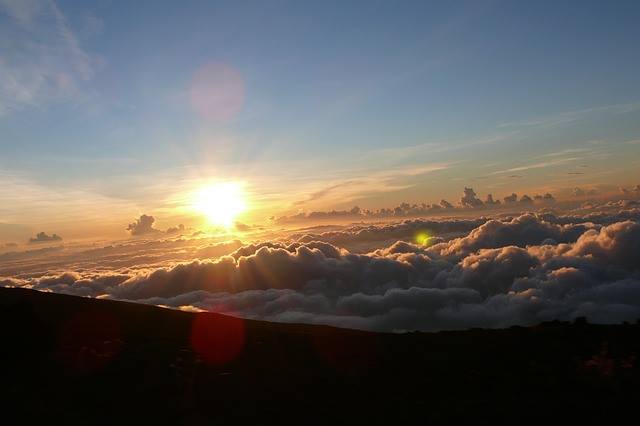
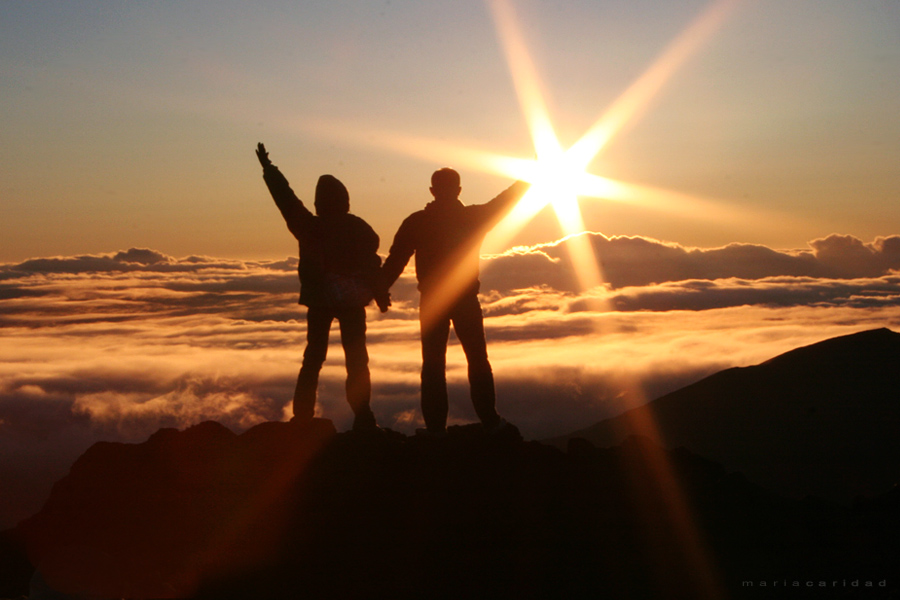
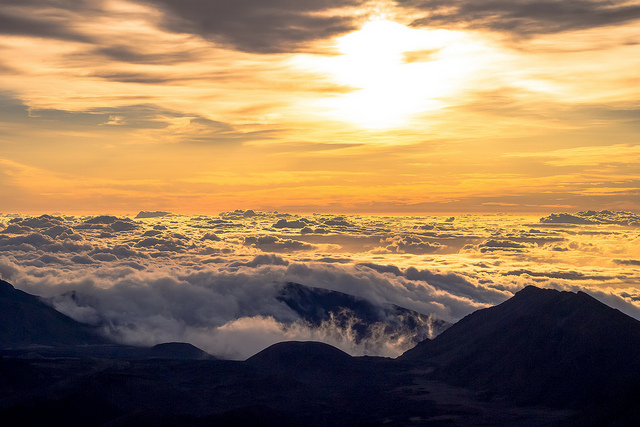
About HALEAKALĀ
Haleakalā Crater
From the summit of Haleakalā, Maui’s largest volcano, you can look down to see the famous crater of Haleakalā. Walk through a cinder desert and see the many volcano cones spread throughout this massive volcanic depression that’s 7 miles long, 2 miles wide, and 2,600 feet deep. See another world as you hike in this unbelievable volcanic landscape.
The Haleakalā Crater is part of what the Haleakalā National Park refers to as the “Wilderness Area.” Hikers can take two main trails into the richly-colored crater from the summit area: Halemau’u or Sliding Sands trails. Nēnē or Hawaiian geese can sometimes be seen in their natural habitat in the Haleakalā Crater. “The mountain summit is one of the only easily-accessible areas of Hawaii where our rare and endemic species survive and thrive,” The Haleakalā National Park Service noted. The park itself is composed of more than 30,000 acres of public land, the most famous aspect of which is the Haleakala Crater. At this high of an altitude, the weather is cooler and can be unpredictable, so it’s good to wear layered clothing as well as sunscreen and closed-toed shoes.
Haleakalā Summit
The peak of Haleakalā stands at 10,023 feet above sea level and is the highest point on the island of Maui. As one of the most popular Maui activities.
Haleakalā is known as the “house of the sun” because as Hawaiian legend has it, the demigod Maui lassoed the sun here as he stood on the Haleakalā summit in order to slow its descent and lengthen the day. Haleakalā is a dormant volcano that last erupted around 1790. More than one million people visit the summit of Haleakalā each year.
The summit offers a once-in-a-lifetime view across an amazing landscape of rolling mountains, surrounding islands, and the ever-expansive ocean. Gaze across the water at the island of Hawaii with its peaks of 14,000 ft. along with views of Molokai, Lanai, and Kahoolawe.
The clear skies and excellent viewing conditions at the Haleakala summit attract many visitors who bring their telescopes to gaze at the stars and other celestial bodies. In fact, the University of Hawaii’s Haleakalā Observatory is located near the visitor’s center but is not open to the public.
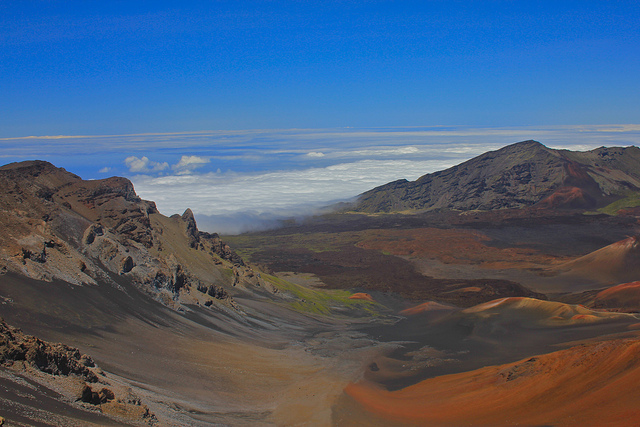
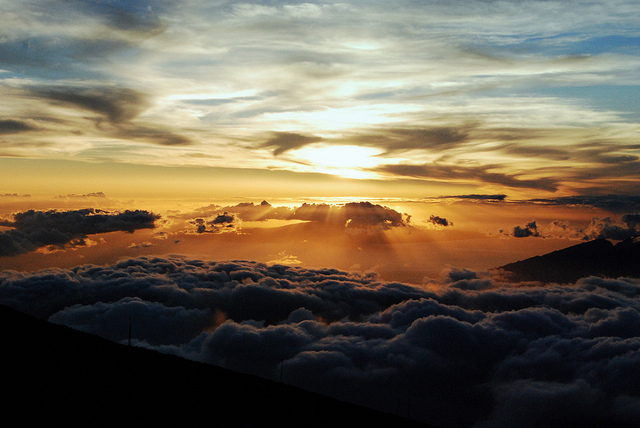
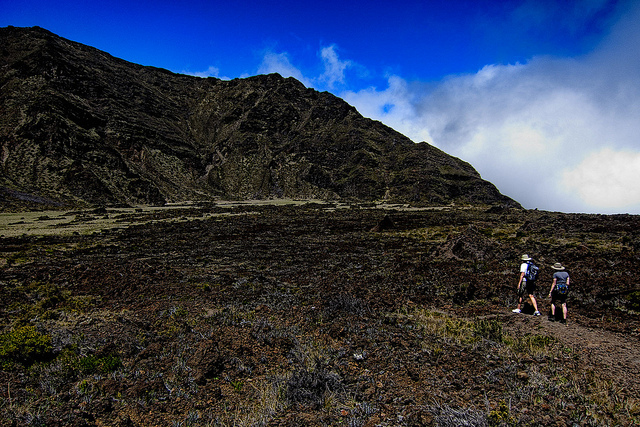
As Featured on Adventure Hawaii
![]()




